by A. J. Staley
LOS ANGELES COUNTY…ON THE MOVE!
Los Angeles METRO continues to make progress on the Phase 2 extension of the EXPO line from Culver City to Santa Monica, and appears to be on schedule for opening on May 20, 2016.
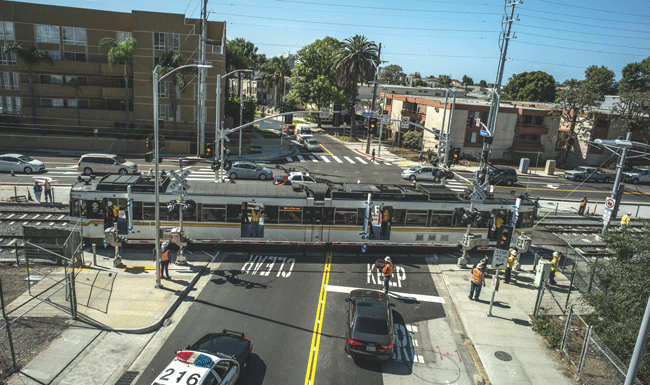
Testing at the Bagley Crossing in Culver City.
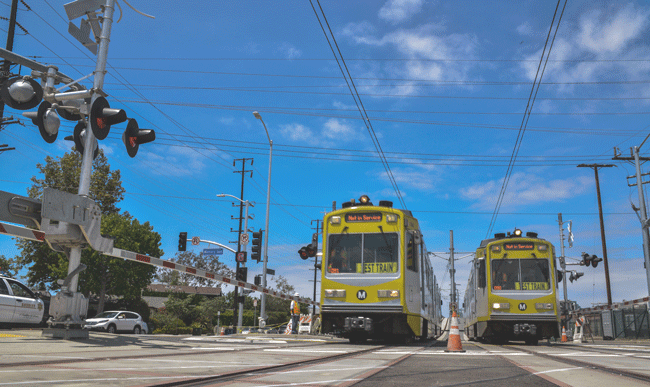
Testing at the Military Crossing in West Los Angeles.
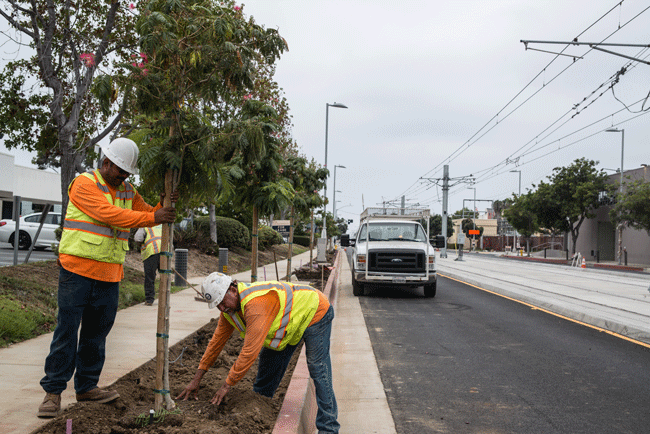
Landscaping along Colorado Boulevard in Santa Monica.
The $1.5 billion, 6.6 mile extension will allow passengers to travel once again by Light Rail Vehicles (LRV) between downtown Los Angeles and the Pacific Ocean for the first time since the demise of Los Angeles County’s extensive streetcar network’s in the 1950’s.
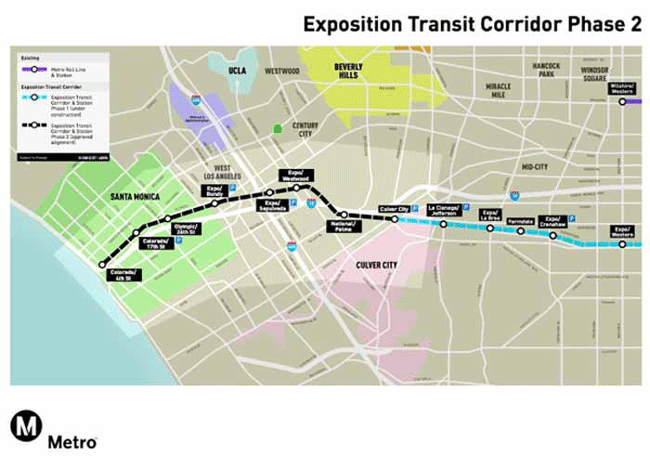
Expo 2 Map from Culver City to Santa Monica.
This will hopefully get passengers out their cars and onto public transportation to avoid the heavily traveled and often congested 10 Interstate. As reported elsewhere, trains started running without passengers from Culver City to Santa Monica on March 21, 2016.
As part of the celebrations for the opening of the Expo Line to Santa Monica on Friday, May 20, the Source, a Westside Los Angeles blog, reported that the Los Angeles County Metropolitan Transportation Authority (Metro) will offer free rides on Friday and Saturday and will hold station celebrations on Saturday, May 21. The free rides will be on the entire Expo Line, from 7th St/Metro Center to Downtown Santa Monica. On Friday, free rides will begin at noon and will continue until the close of service. On Saturday, May 21, the free rides will start at 4:42 a.m. in Downtown Santa Monica and at 4:45 a.m. at 7th/Metro Center and will last all day until the end of service around 2 a.m. “We invite the public to join us on Friday and Saturday to celebrate the historic opening of the Metro Expo Line to Santa Monica,” said Metro CEO Phillip A. Washington. “We encourage the community to enjoy this new light-rail line service and see for themselves how close to the beach Metro can get you.” The station celebrations will be from 10 a.m. to 4 p.m. at the following new stations: Downtown Santa Monica, 17th St/SMC, 26th St/Bergamot, Expo/Bundy and Palms. The Culver City Station that has been open since 2012 will be joining the celebrations. Entertainment, children’s activities, food trucks, bike valet and bike-pit stops and information booths are among the activities.
The Foothill Gold Line has started preparation for Phase 3 which will extend that line east from Azusa to Montclair as shown in the next map.
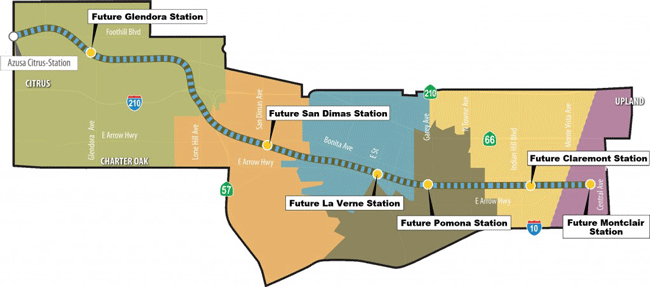
The second phase from Pasadena to Azusa of the Foothill Gold Line, which opened March 5, 2016, has proven in the short time that it has been open to be very successful. Metro had previously projected that the ridership would grow to 13,000 per day by 2035. Since March 5th the ridership boarding’s on the Light Rail Vehicles (LRV) has been running 4500 to 5000 persons per day, not to mention that the weekend boarding’s have been heavy as well. If this trend continues it is estimated that the growth rate will exceed the projected rate long before 2035. A recent survey of the passengers who boarded the LRV’s at the six new stations on the 11.5 mile extension found that over 70 percent riders are new to METRO and about 66 percent of them said they no longer drive to work.
In a recent interview with CEO Phillip Washington he stated “within the next 10 years it is expected that Los Angeles County will increase by 750,000 people”. He spoke about a Long Range Transportation Plan (LRTP) for 100 years that is being drafted by METRO which may go on the Los Angeles, California ballot in November. The plan would add a 40 year half cent county sales tax, making the price tag about $120 billion dollars. Voters will also decide whether to extend the current half-cent tax from transit on Measure R. The plan and measure is currently being worked on will be presented to the LA-METRO Board of Directors in June, and if approved, the measure will be placed on the ballot in November. Mr. Washington spoke of looking at existing transit corridors that already have rail lines and the busiest traveled routes. Examples given were the Vermont transit corridor, Sepulveda Pass, extending the Orange line possibly to Cal State University, Northridge (C-Sun), additional stations on some of the existing lines and other options. The approved funds will provide more rail, bus, and road plans, including a train tunnel under the 405 freeway. The traffic on Los Angeles freeways and interstates is heavily congested and the need for more rapid transit is desperately needed throughout the County. During the first 15 years of the plan, Metro would be working in 18 areas of the County. There will be meetings held throughout the County in different communities to determine the needs and desires in each area. Mr. Washington stated that Metro is committed to take into consideration all areas of the county and is determined that there will be something for the entire county. However, if the Board or the voters ultimately do not support the augmenting and extension of the taxes at this time, the 2009 Long Range Transportation Plan (LRTP) will be modified to stay within limits of the guide lines currently in existence.
HONOLULU RAIL TRANSIT!
The City of Honolulu has just completed the first 5 miles of guideway for Oahu’s rail transit system which represents 25 percent of the 20 miles for the Honolulu High-Capacity Transit Corridor Project.
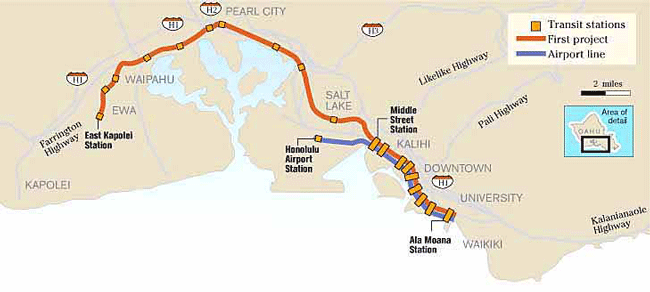
It is hoped that the mostly elevated system will help alleviate the substantial traffic issue affecting the state’s most populous urban area, as well as providing a reliable transportation alternative for visitors and commuters in southern Oahu. “This is an important milestone,” stated Honolulu Mayor Kirk Caldwell. “This is a visual reminder of the fact that we are building our way to a better transportation future. As commuters drive by and look at the guideway, they know that an alternative to sitting in traffic is on the way.”
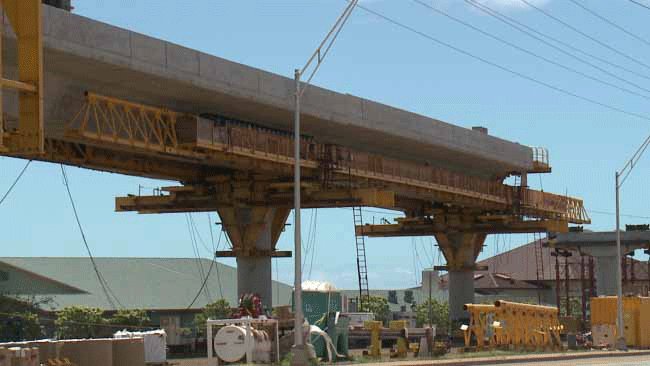
The five miles of guideway includes more than 215 spans. Each span, which is the portion of guideway between two columns, typically consists of 12 segments. Each segment weighs about 50 tons. The first phase will link East Kapolei and Aloha Station and is scheduled to open in 2018. A second phase of the project will continue the line from Aloha Station to Ala Moana Center in urban Honolulu and is slated to open in 2019. The first 2 LRV’s for the Honolulu Rail Transit arrived on March 24, 2016, at Honolulu Harbor Pier 1.
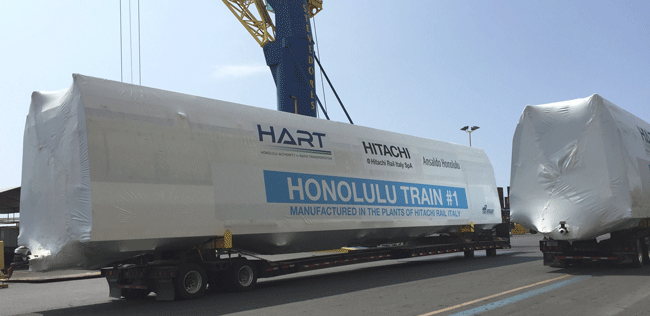
The rail cars were trucked from the Hitachi Rail Factory in Pittsburg, California and then shipped over to the island of Oahu, Hawaii.